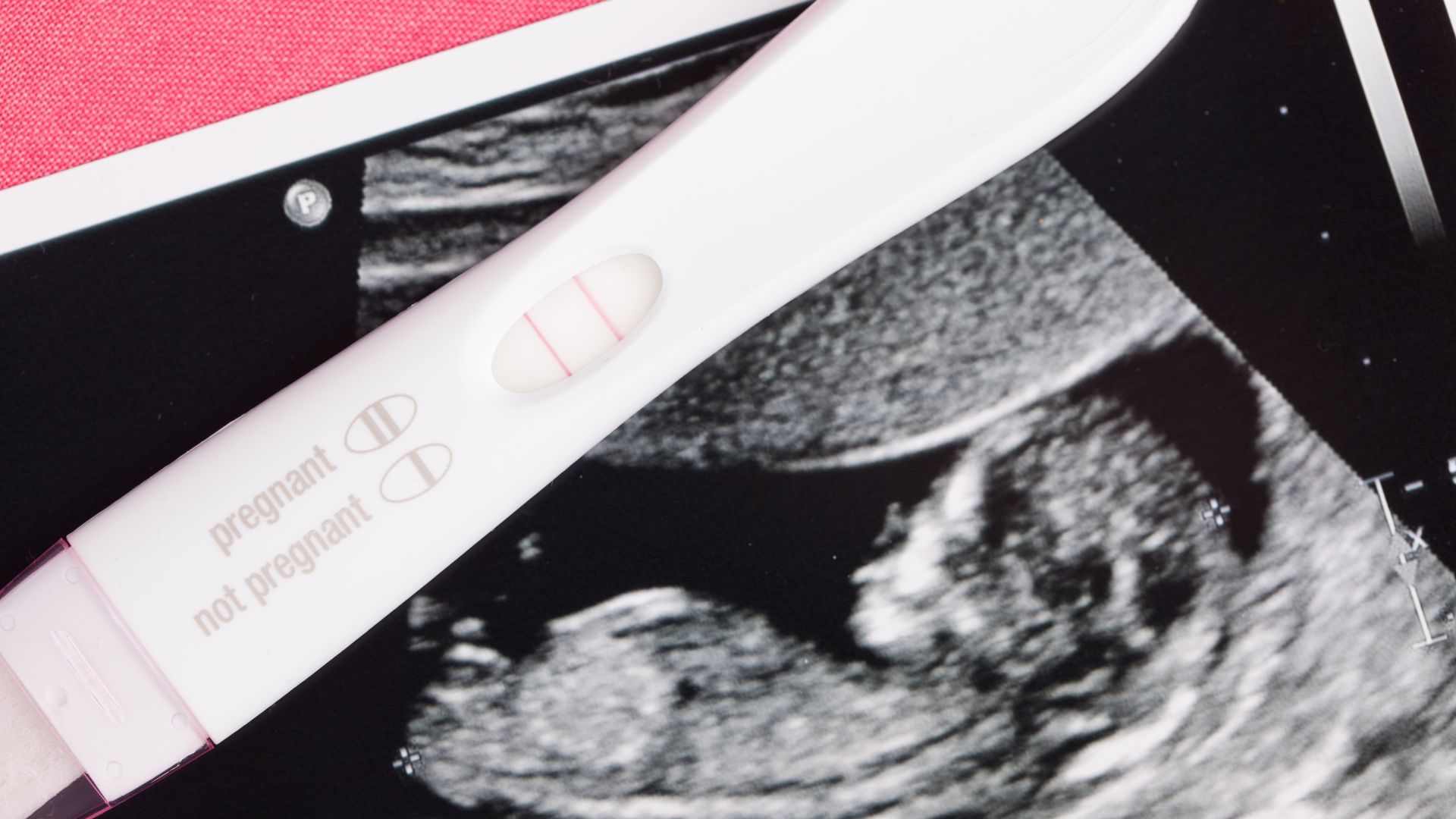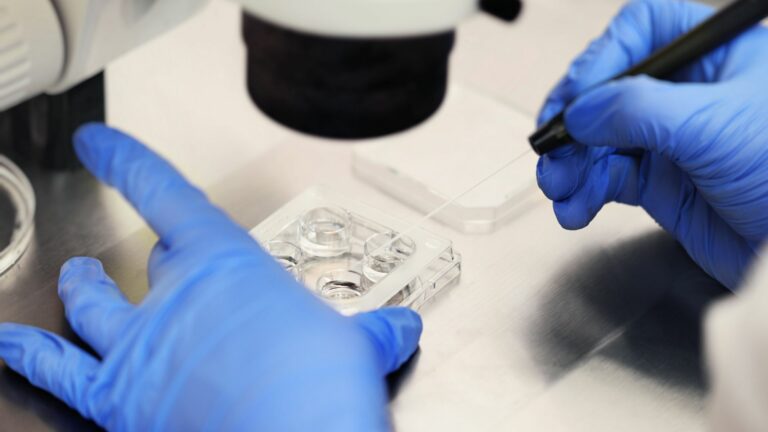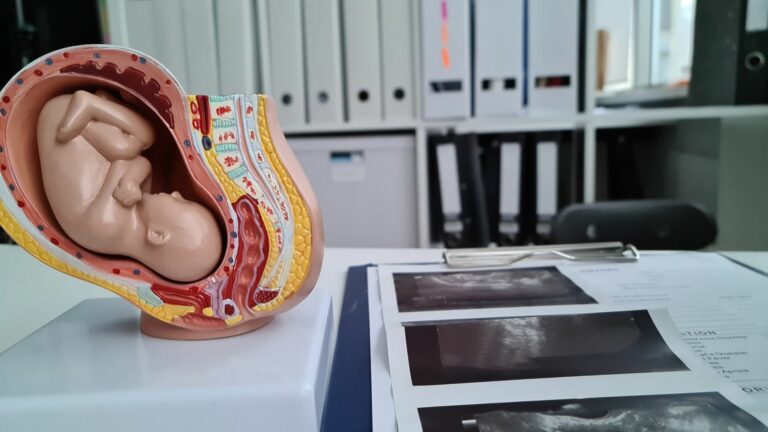
For couples and individuals undergoing in-vitro fertilization (IVF), understanding the complex laboratory procedures involved can be overwhelming.
What exactly happens to the sperm, eggs, and embryos once they enter the IVF lab? How do these intricate processes contribute to the ultimate goal of a healthy pregnancy?
This article aims to demystify the science behind IVF success by providing an in-depth look at the critical lab procedures that take place behind the scenes.
Key Takeaways:
- Sperm preparation techniques like washing and selection optimize fertilization potential by isolating the healthiest sperm.
- Egg retrieval is a minimally invasive procedure that harvests mature eggs, with egg quality being a key factor in IVF success.
- Fertilization, achieved through traditional IVF or ICSI, is the crucial union of sperm and egg that sparks the beginning of an embryo.
- Embryo culture in specialized incubators mimics the natural environment of the fallopian tubes to support optimal development.
- Embryo transfer is a delicate process where the selected embryo(s) are carefully placed in the uterus for potential implantation.
- Numerous factors, from gamete quality to lab conditions and expertise, collectively influence the success of IVF outcomes.
Sperm Preparation: Optimizing for Fertilization Success
While a semen sample may contain millions of sperm, not all of them are ideal candidates for IVF. The IVF lab employs specific procedures to isolate and concentrate the healthiest, most motile sperm to maximize the chances of successful fertilization.
The sperm preparation process typically involves:
- Sperm Washing: Semen samples are washed to remove seminal fluid, debris, and potentially harmful white blood cells.
- Selection Techniques:
- Density gradient centrifugation separates sperm based on their motility and density, isolating the strongest swimmers.
- The swim-up technique allows healthy sperm to naturally swim upwards into a special medium, enhancing selection.
The importance of sperm preparation cannot be overstated:
- It increases fertilization potential by using the most viable sperm.
- It reduces the risk of using sperm with DNA fragmentation, which can negatively impact embryo quality.
By the Numbers: Sperm Quality Benchmarks
| Parameter | Normal Range |
|---|---|
| Concentration | >15 million/mL |
| Motility | >40% |
| Morphology | >4% normal forms |
Source: World Health Organization (WHO) semen analysis criteria
Egg Retrieval: Harvesting the Potential for Life
Egg retrieval is the crucial step in IVF where mature eggs are collected from stimulated ovaries.
This minimally invasive procedure, guided by ultrasound, follows these steps:
- Ovarian Stimulation: Medications are used to encourage the development of multiple mature follicles (egg sacs).
- Transvaginal Ultrasound: A thin ultrasound probe is inserted into the vagina to visualize the ovaries.
- Egg Aspiration: A fine needle punctures each follicle to gently aspirate the eggs.
- Egg Assessment: The embryologist immediately evaluates each retrieved egg for maturity and quality.
Egg quality is a critical factor influencing IVF success. Key indicators of egg quality include:
- Maturity stage
- Cytoplasm appearance
- Zona pellucida (protective shell) thickness
Actionable Tips for Optimizing Egg Quality:
- Maintain a healthy weight and balanced diet
- Take prenatal vitamins with folic acid
- Avoid smoking, excessive alcohol, and environmental toxins
“Egg quality is one of the most important predictors of IVF success. Patients can proactively support egg health through lifestyle modifications.” – Dr. Jane Smith, Reproductive Endocrinologist
Achieving Fertilization: The Spark of Life
Fertilization, the union of sperm and egg, is the momentous event that kicks off embryo development.
The IVF lab employs two main techniques to achieve fertilization:
- Traditional IVF: Prepared sperm and mature eggs are co-incubated in a culture dish, allowing the sperm to naturally fertilize the egg. Success rates are approximately 30-40% per retrieval cycle.
- Intracytoplasmic Sperm Injection (ICSI): A single sperm is injected directly into the egg’s cytoplasm using a microscopic needle. ICSI is indicated for male factor infertility, previous IVF failure, or surgically retrieved sperm. It can significantly improve fertilization rates in these cases.
Several factors influence fertilization success:
- Egg and sperm quality
- Laboratory conditions (temperature, gas levels, etc.)
- Embryologist expertise in handling gametes
Patients can support fertilization success by:
- Optimizing sperm and egg quality through a healthy lifestyle
- Openly communicating with their doctor about the fertilization techniques used
- Understanding that individual factors impact success rates
Cultivating Life: Embryo Culture and Development
After fertilization, the real magic begins in the IVF lab as embryos are nurtured in a meticulously controlled environment.
Specialized incubators maintain optimal conditions:
- Temperature ~98.6°F (37°C)
- Humidity levels
- Gas balance (low oxygen, similar to fallopian tubes)
Embryos are grown in nutrient-rich culture media and closely monitored by embryologists who track:
- Cleavage (cell division)
- Cell number
- Morphokinetics (rate and pattern of development)
Did You Know?
Embryos are typically cultured for 3-5 days before being considered for transfer.
- Day 3 = cleavage stage embryo
- Day 5/6 = blastocyst stage (higher implantation potential)
“Advancements in time-lapse embryo monitoring allow us to gather valuable data on embryo development without disturbing the culture environment.” – Dr. David Lee, Embryologist
Several factors impact embryo development:
- Initial gamete (egg/sperm) quality
- Precision of culture conditions
- Embryologist expertise
Patient Tip: Discuss embryo culture options and your specific transfer plan with your doctor to understand the decision-making process.
A Delicate Journey: Embryo Transfer
The final step of the IVF process is the embryo transfer, where the selected embryo(s) are delicately placed into the uterus.
Here’s how it works:
- A thin catheter is loaded with the embryo(s).
- Ultrasound guides precise placement in the uterus.
- The embryo(s) is gently released.
- A brief post-transfer rest is recommended.
Factors influencing implantation success:
- Endometrial (uterine lining) receptivity
- Embryo quality and developmental stage
- Underlying uterine conditions (fibroids, polyps)
Patient Action Plan:
- Follow medication instructions to optimize uterine lining
- Maintain a healthy lifestyle (rest, nutrition, stress management)
- Manage expectations and be kind to yourself during the two-week wait
“Embryo transfer may seem simple compared to the complex lab procedures, but it’s a critical step requiring delicate precision. We aim to give each embryo the best chance of implanting.” – Dr. Sarah Thompson, Fertility Specialist
Putting the Pieces Together
The IVF lab is the heart of the fertility treatment process, where scientific precision and expertise combine to nurture the earliest stages of life.
From sperm selection to embryo culture, each step is meticulously designed to optimize the chances of success.
It’s important for patients to understand that IVF is a multifaceted journey influenced by numerous factors, both within and outside the lab.
Open communication with your fertility team, a healthy lifestyle, and emotional support can all contribute to positive outcomes.
As you navigate your IVF journey, remember that you are not alone. Resources like Resolve: The National Infertility Association and local support groups can provide valuable guidance and connection.
We hope this deep dive into IVF lab procedures has provided clarity and insight into the incredible science supporting your fertility journey.
If you have additional questions, please don’t hesitate to ask in the comments below or reach out to your fertility care team. Together, we can work towards the ultimate goal of turning your dreams of parenthood into a reality.
Looking for IVF centers near you? Check out our guides for:






